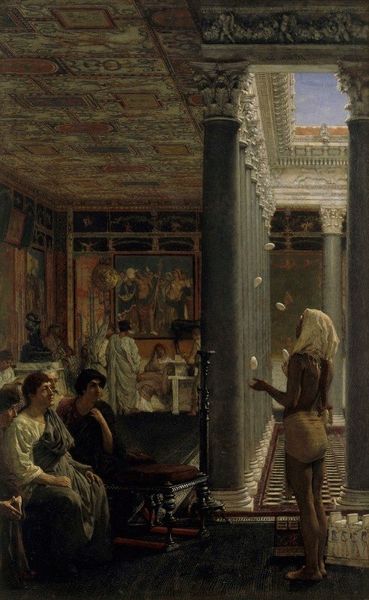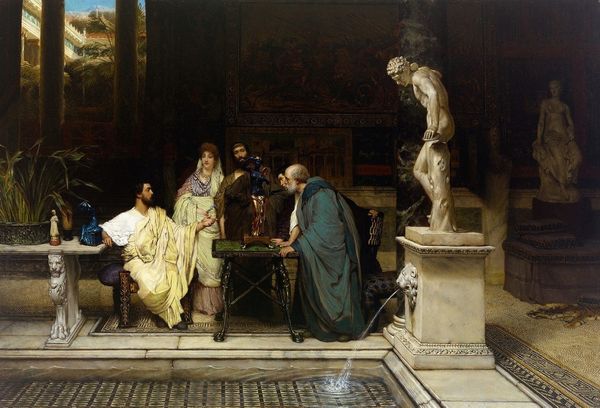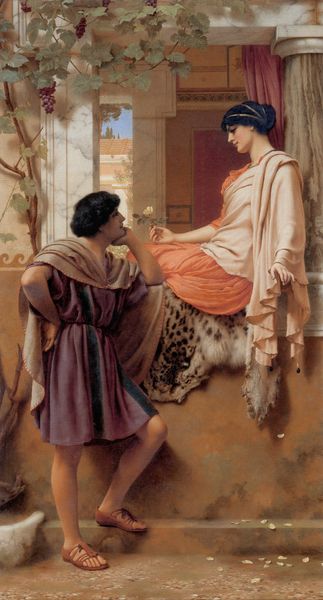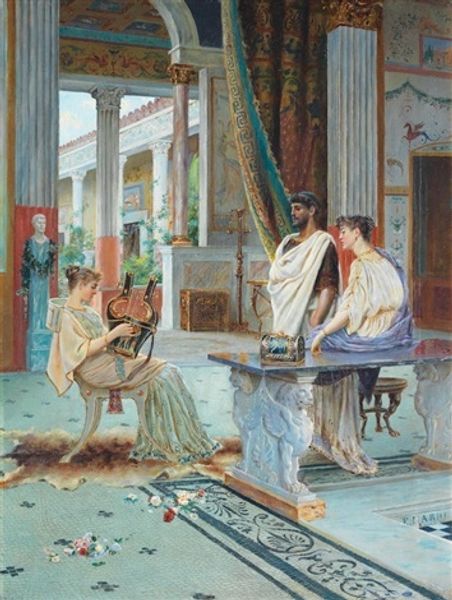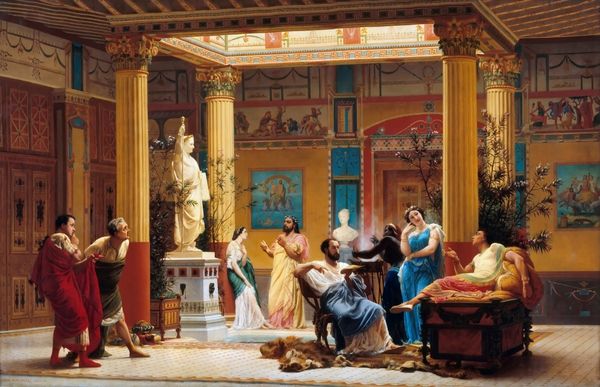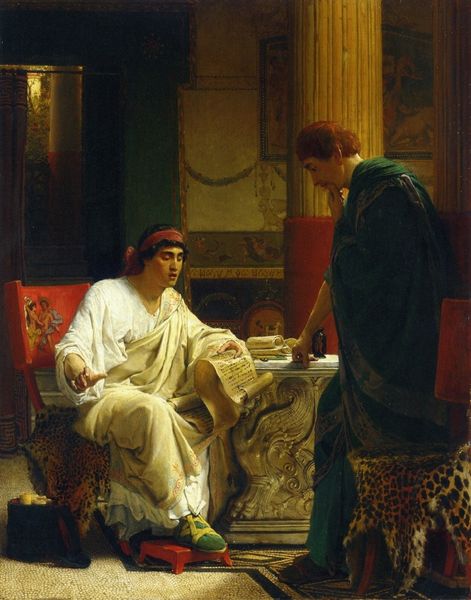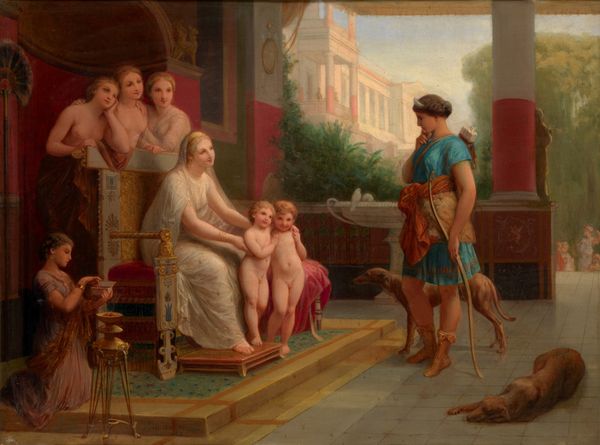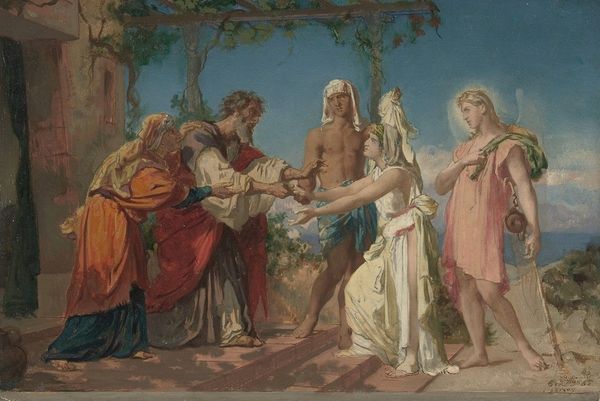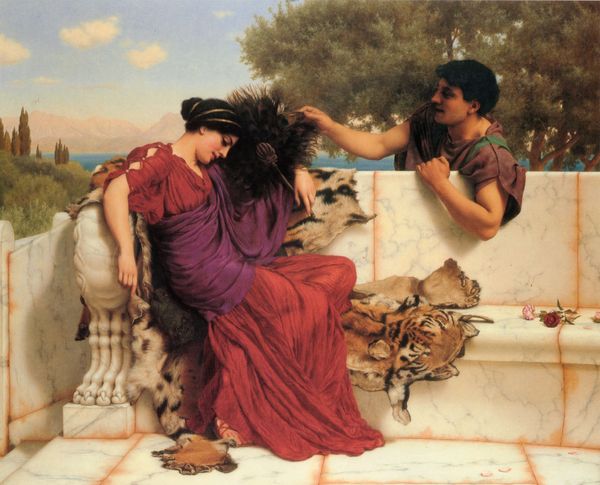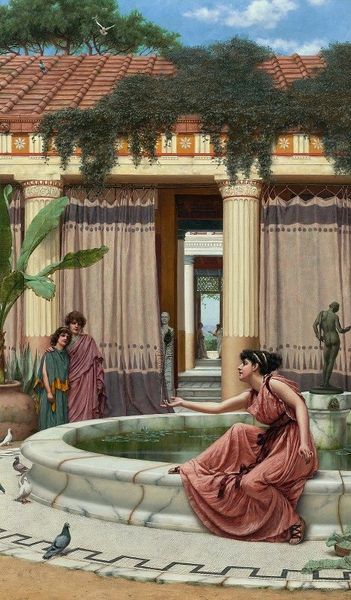
Theatrical Rehearsal in the House of an Ancient Roman Poet 1855
0:00
0:00
painting, oil-paint
#
neoclacissism
#
narrative-art
#
painting
#
oil-paint
#
greek-and-roman-art
#
figuration
#
ancient-mediterranean
#
genre-painting
#
history-painting
#
academic-art
Dimensions: 48 x 76 cm
Copyright: Public domain
Editor: Here we have Gustave Boulanger’s oil painting, “Theatrical Rehearsal in the House of an Ancient Roman Poet,” created in 1855. It's quite a grand scene, and the theatricality is palpable. What do you see in this piece, looking at it from a formalist perspective? Curator: From a formalist point of view, I am immediately drawn to the composition. Consider the arrangement of figures in relation to the architectural setting. Do you observe how the verticality of the columns and the implied lines of the courtyard space create a series of planes? Editor: Yes, it’s almost like the figures are placed within a stage set, reinforcing that idea of "theatricality." The light and shadows seem carefully managed too. Curator: Precisely. Notice the artist's controlled application of light, selectively illuminating certain figures and architectural details, while leaving others partially obscured. How does this play with your reading? Editor: It creates a sense of depth, guiding your eye through the scene. But is there a tension between the smooth, almost idealized forms and the more detailed, almost genre-like, rendering of the figures’ expressions? Curator: That tension is vital. Boulanger constructs the scene in accordance to classical structure, line, and clear form, however imbues the composition with qualities suggestive of nineteenth-century aesthetics through heightened, selective emotional expression. How might the painting's meticulously rendered surfaces, coupled with its calculated composition, comment on the artist's vision? Editor: Perhaps it emphasizes the artificiality of the scene, that it's a constructed vision of the ancient world rather than an accurate depiction. Thank you; I see so much more now by focusing on the internal dynamics! Curator: My pleasure! By attending to these formal relationships, we unveil nuanced interpretations of the artwork's meaning.
Comments
No comments
Be the first to comment and join the conversation on the ultimate creative platform.

